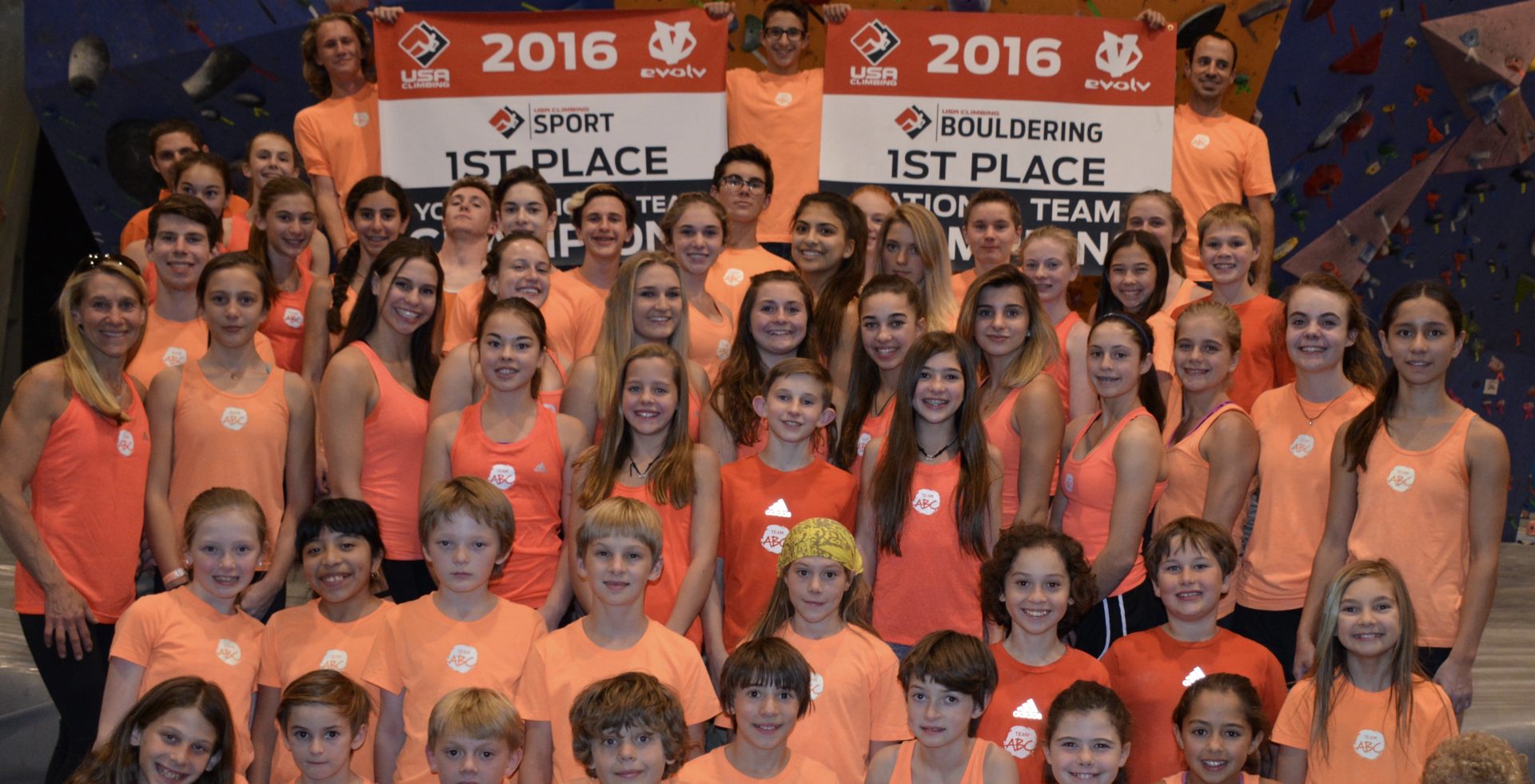
In the middle of the Qualifier 2 round yesterday it began raining, hard. Then eventually it stopped. All the countries decided to keep climbing through the night to finish the round. Apparently the kids made the best of the break and had a long jump competition in the sand while the setters were drying the routes. This seriously looks like the most fun competition venue ever!

Margo’s highpoint on Female Youth B Quali 2 was matched by only one other climber, Molly Thompson-Smith of Great Britain. Rankings are based on combined score of Q1 and Q2 so Margo and Molly, who performed identically on both Quali routes, are tied for 2nd behind Team USA climber Claire Buhrfeind.

Here are the Team USA scores for climbers who are going into semifinals:
Girls
Shannon Lochridge – Female Junior – 10th
Michaela Kiersch – Female Junior – 21st
Cicada Jenerik – Female Junior – 25th
Kyra Condie – Female A – 16th
Jacquelyn Wu – Female A – 18th
Claire Buhrfeind – Female B – 1st
Margo Hayes – Female B – 2nd
Rita Marsanova – Female B – 13th
Grace McKeehan – Female B – 17th

Boys
Alex Fritz – Male Junior – 15th
Josh Levin – Male Junior – 18th
Noah Ridge – Male Junior – 19th
Owen Graham – Male Junior – 22nd
Sean Bailey – Male A – 14th
Nicholas Milburn – Male A – 16th
Dylan Barks – Male A – 20th
Brendan Mitchell – Male B – tied for 4th with Sergei Bydtaev (RUS)
Jesse Grupper – Male B – 17th
Solomon Barth – Male B – 22nd

And here are the Team USA scores for climbers who did not make semis:
Girls
Nicole Hansen – Female Junior – 36th
Callie Walter – Female A – 29th
Amelia Metcalf – Female A – 39th
Boys
Andrew Lamb – Male Junior – 29th
Dominic LaBarge – Male A – 41st
Cole Skinner – Male B – 41st
Full Results (use dropdown menus to toggle between categories) – IFSC – International Federation of Sport Climbing: General result female youth B lead
~
A note about the holds
One of the most difficult things about competing internationally, besides of course the travel, jet lag, different food, different climate, different everything, is that the holds and volumes are often entirely new. US competitors competing in the US can reasonably expect to have some knowledge of the holds, because they will have seen many of them before in their home gyms. Internationally, many or all of the holds will be unknowns. This means that route reading is more difficult because you cannot, from the ground, know if that next hold is an incut pinch or a slopey pinch. You don’t know if you’re jumping for a flat ledge or if there’s a sweet spot on that volume. All of this makes for a much more challenging onsight experience.
~
More Pictures!







To see all the photos and like the IFSC Youth World Championships page on facebook, click here – IFSC World Youth Championship Singapore 2012.


